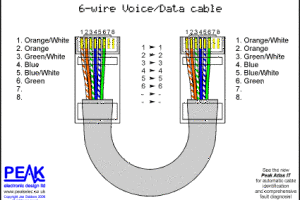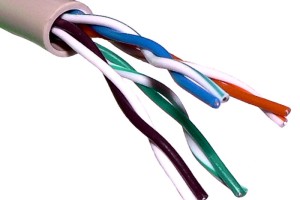Network Cabling: Why You Want a Professional
Your computer has the blue screen of death. Or your cable television is out and you don’t know why. Or you move into a new apartment, hook up your wireless router, but for some reason cannot connect to the internet on your new laptop. Along with the many gifts and eases of technology comes also the slip-ups, the malfunctions, the unexplainable complications. Most of us have that one friend or family member who seems somehow blessed with the magic gift of having a talent for technology. Whether they are a highly payed software designer in their professional life, or your twelve-year-old genius nephew, you must hope and pray they will be available to pick up the phone when you need them. You also have to hope they know how to fix your problem and won’t be too irritated at being constantly asked for help. While in some situations these technology-savvy friends are a wonderful resource, there are obvious reasons why they are not always the best solution to your tech-based meltdown.
In the spectrum of home network cabling, there are several reasons why you might want a professional cabler to help you solve any problems that might arise. Because it seems comparable to an electric appliance, (with a series of cords that must be ‘plugged in’ to devices) it might appear like these are problems you can fix yourself, and certainly, powering down, unplugging, and replugging connections is a good way to reset most systems and trouble shoot minor problems. However, as technology grow and innovates so to do the issues that might arise. If you are building a new house or moving into new construction, the information cable network must be designed, installed and run from the network service provider. A professional network cabler will have the specs on how to most effectively make this connection to a larger network server. Depending on the sort of data system you require, different sorts of cables may be applied to create the best network for your home. Coaxial cabling was the first information cable type, designed for early television and antennae-based broadcasting systems. With the advent of computer device local area networks or LANS, twisted pair cables were created to help minimize signal bleeding. Many home networks are run today with fiber optic cabling which is a whole new ballpark unto itself.
If something goes wrong with a pre-existing network it can be from a variety of sources that the trouble arises. Sometimes the server goes down because of a provider-wide malfunction from weather or a glitch somewhere in the topographical location. Because many cable lines are run under the soil, things like plant roots, water lines and electrical malfunctions can occur. Other times, there can be a problem with the point at which the provider system connects to your home network. Your devices- the wireless router and the cable box, can wear down with use and stress and need maintenance. Cables themselves only have so long of a shelf-life, and internal problems are difficult for the untrained eye to catch and repair. So, while you might have a tech-talented friend in your life, for home network cabling problems, its best to contact a professional.




